50 F. high in the Twin Cities Friday.
64 F. average high on October 3.
61 F. high on October 3, 2013.
Trace of rain fell yesterday.
Minnesota Weather History on October 3. Source: Twin Cities NWS:
2005:
Localized heavy rain fell in parts of central Minnesota. 4.61 inches of
rain fell in the Minneapolis area, 3.42 inches was recorded in St.
Cloud, 2.28 inches in Redwood Falls, 2.98 inches in New London, 3.23
inches in Buffalo, 1.43 inches in Little Falls, 1.92 inches in
Alexandria, 1.10 inches in Glenwood, and 1.77 inches in Amery, WI.
1939: Storm dumps 2.16 inches of rain at Fairmont.
1922: A record high of 89 degrees Fahrenheit was set in the Minneapolis area.
Canadian Slap
Who
turned up the volume on our weather? 2013 brought $942 million in
damage to Minnesota - third greatest in the USA - much of it from an
August hailstorm. Then came the evil Polar Vortex and the roughest
winter in a generation. June, 2014 was the wettest month in recorded
Minnesota history.
What's next?
The same supernaturally resilient
bubble of high pressure currently parked over western North America, the
ridge that's sparking historic drought for California, is also helping
to funnel chilly air across the icy prairies of Canada into the eastern
2/3rds of America.
We've relapsed into the same overall pattern we
were staring at much of last winter and spring. But a number of factors
suggest the upcoming winter won't be as severe. I'll go into more
detail about that in the coming days.
A swirl of November-ish air
lingers into the weekend with scrappy clouds and temperatures 15-20F
colder than average. If winds ease frost may form Sunday morning, even
for close-in suburbs.
Great news: the mosquito and ragweed season
is drawing to a close; more leaf-raking and less lawn mowing in the
coming weeks. And our definition of warm front will change.
Wouldn't 60F feel great right about now?
* Photo taken late afternoon Friday in Cloquet, courtesy of Todd Frostad.
Tweet-Worthy.
Ian Luhm tweeted out this photo south of Duluth Friday afternoon,
enough snow mixing in with the rain for a serious coating of slush.
Lovely huh?
October Ice Scrapers.
Media Logic meteorologist Todd Nelson snapped this photo Saturday
afternoon in Duluth, which is accustomed to lake effect snow, but
October 3 is a bit early, even for DLH.
Wet Start to October - Will Harvesting Be Impacted? Dr.
Mark Seeley takes a comprehensive look at weather trends; highlighting a
possible impact/delay on the corn harvest due to a very wet start to
October. Here's an excerpt of this week's
WeatherTalk Newsletter: "...
Winona
reported 1.36 inches and Caledonia 1.81 inches, while in the Twin
Cities Metro Area MSP airport reported 1.47 inches and the University of
Minnesota St Paul Campus 1.20 inches. Well over half of the state's
corn crop has reached physiological maturity now and a majority of the
soybeans have dropped their leaves. As the corn and soybean harvesting
season gets underway in earnest this month Minnesota farmers will be
hoping for a series of dry days to get some harvesting done. It appears
that patience will be required waiting for a warm and dry interval of
weather..."
The Freak Hurricane of 1821 And Why It Should Worry Every Mid-Atlantic and Northeast Coastal Resident.
I'm feeling better about living in the Upper Midwest, in spite of the
fresh slaps of Canadian air. Here's an excerpt from meteorologist Jason
Samenow at
The Capital Weather Gang: "
Nearly
200 years ago, a devastating hurricane with sustained winds up to 130
mph crashed into the North Carolina Outer Banks. This beast of a storm
than roared up the East Coast, inflicting immense damage in Norfolk,
swamping Cape May and raising New York’s East River 13 feet in one hour.
Re-insurer Swiss Re, which analyzed this storm, says such a storm today
would cause over $100 billion in damages, and prove 50 percent more
costly than 2012′s Superstorm Sandy, in a recent report “The big one: The East Coast’s USD 100 billion hurricane event...”
Negative Phase of QBO.
What the heck is the QBO? It's the Quasi-Biennial Oscillation, winds in
the upper reaches of the atmosphere that correlate with where blocking
patterns tend to set up over time. Last winter we experienced a strongly
positive phase of the QBO, this year the phase trend is negative. Thus
my suspicion (hope?) that we won't have another winter with a
temporarily stalled Polar Vortex. More background on QBO
here. Tweet courtesy of WSI.
Long-Range Winter Model Guidance.
Although we can't predict specific weather for a specific date much
beyond 7-10 days, it is possible to distinguish broad trends. The suite
of various climate models above, valid December - February) show a
uniformly milder than average bias for most of the North America during
the heart of winter. Model data: NOAA NCEP.
Andrew Revkin Is Coming to Minnesota. Author of The New York Times's Dot Earth content, Revkin will be presenting at the
University of Minnesota - St. Paul Student Center Theater next Tuesday, and all are welcome to attend. More details: "
The
Annual Kuhenast Lecture in Atmospheric and Climate Science is scheduled
for October 7th, 3 p.m. at the St. Paul Campus Student Center theater.
The 22nd Annual Kuehnast Lecture will feature author, musician, and
award-winning journalist Andrew Revkin of The New York Times and Pace
University. Revkin is known widely as the founder of the Dot Earth blog.
His lecture, "The New Communication Climate," will explore issues and
opportunities arising as both the environment and the news media
experience an era of unprecedented and unpredictable change.
Refreshments will follow the program."
Wealth Without Workers, Workers Without Wealth.
Convinced your job can't eventually be outsourced to a smart(er)
computer? You may rethink your position after reading this story at
The Economist; here's an excerpt: "...
In
the coming years the disruption will be felt by more people in more
places, for three reasons. First, the rise of machine intelligence means
more workers will see their jobs threatened. The effects will be felt
further up the skill ladder, as auditors, radiologists and researchers
of all sorts begin competing with machines. Technology will enable some
doctors or professors to be much more productive, leaving others
redundant. Second, wealth creation in the digital era has so far
generated little employment. Entrepreneurs can turn their ideas into
firms with huge valuations and hardly any staff..."
No, Seriously, How Contagious Is Ebola? NPR has a reassuring story - here's an excerpt: "...
Why is Frieden so sure this virus won't spread beyond a handful of cases? It boils down to something called "R0."
The reproduction number, or "R nought," is a mathematical term that
tells you how contagious an infectious disease is. Specifically, it's
the number of people who catch the disease from one sick person, on
average, in an outbreak.* Take, for example, measles. The virus is one
of the most contagious diseases known to man. It's R0 sits around 18..." (Image credit: Adam Cole, NPR).
The World's Loudest Sound.
Kottke.org
has a fascinating story about the debilitating and life-threatening
impact of unimaginable noise at close range. Imagine the loudest concert
you've ever attended. Multiply by 100. Here's an excerpt: "
The
sound made by the Krakatoa volcanic eruption in 1883 was so loud it
ruptured eardrums of people 40 miles away, travelled around the world
four times, and was clearly heard 3,000 miles away.
Think, for a moment, just how crazy this is. If you're in Boston and
someone tells you that they heard a sound coming from New York City,
you're probably going to give them a funny look. But Boston is a mere
200 miles from New York. What we're talking about here is like being in
Boston and clearly hearing a noise coming from Dublin, Ireland..."
Failing Sense of Smell May Predict Sooner Death. Nose, don't fail me now. Here's the intro to a fascinatingly troubling article at
The New York Times: "
A
defective sense of smell appears to be a good predictor of dying within
five years, a new study has found. Researchers tested a nationally
representative sample of 3,005 men and women aged 57 to 85 on their
ability to identify five smells: rose, leather, orange, fish and
peppermint. The study appears online in PLOS One..."

Google Glass Now Plays Movie Trailers, Close Captions Your Conversations. If done right this could be a big breakthrough for the hearing-impaired.
Gizmag has the details; here's a clip: "
Google Glass
hasn't exactly set the world on fire – or, for that matter, even left
beta status. But that doesn't mean there aren't still some cool
potential uses for the headset. Today Glass has two big new apps: one
that can turn it into a life-changing tool for the hearing-impaired, and
another that, erm, helps movie theaters sell tickets..."
TODAY: More clouds than sun, feels like early November. Wind chill: 30s. Winds: NW 15-20. High: 48
SATURDAY NIGHT: Skies clear, winds ease up a bit. Frost risk late. Low: 34
SUNDAY: Early frost outside the downtowns. Partly sunny, dry for Twin Cities Marathon. High: near 50
MONDAY: Mostly cloudy, passing shower possible. Wake-up: 37. High: 51
TUESDAY: Partly sunny, a little nicer. Wake-up: 36. High: 57
WEDNESDAY: More clouds, showers far south. Wake-up: 41. High: 58
THURSDAY: Lot's of clouds, turning cooler. Wake-up: 45. High: 55
FRIDAY: Blue sky, still chillier than average. Wake-up: 39. High: 52
* Photo credit: Media Logic meteorologist Todd Nelson.
Climate Stories...
A Cargo Ship Just Completed A Historic Trip Through The Northwest Passage. Business Insider
has the eye-opening story; here's the introduction: "The hazardous
Northwest Passage is open for business. The MV Nunavik left Canada’s
Deception Bay on September 19 and rounded Alaska’s Point Barrow on
Tuesday – without an icebreaker escort. Owned by shipping firm Fednav
and built in Japan, the Nunavik is the first cargo ship to make the trip
unassisted, although technically, she is rated as a Polar Class 4
vessel, and can withstand year-round operations in first-year ice..."
Map credit above: "
The ship's route through the Northwest Passage." CNA.
Travel Scene: Global Warming Opens Northwest Passage to Pleasure Cruises.
If anyone onboard is sober enough to pay attention they might be a
little distressed at the ability to cruise NORTH of Canada, but maybe
that's just me. Keep the champagne flowing. Here's an excerpt from PostBulletin.com: "Global
warming and the resultant melting of parts of the Arctic icecap have
opened a new world of travel — a 900-mile, 32-day luxury cruise with
fares starting at $20,000.
Crystal Cruises, one of the world's top-rated cruise lines, has
announced that one of its ships, the Crystal Serenety, will traverse the
fabled Northwest Passage on this Pacific-to-Atlantic voyage, beginning from Seward, Alaska, through the north part of mainland Canada and the Arctic Ocean to New York City..."
Earth Losing A Trillion Tons of Ice A Year.
Antarctic sea ice may be increasing (due to ocean warming and changes
in wind circulations in the Southern Hemisphere) but it's not close to
making up for ice loss in the Arctic and Greenland, according to this
post at Quark Soup by David Appell; here are a few excerpts: "At Slate, Phil Plait notes a new paper
that finds the Antartic is losing 159 gigatonnes of land ice a year.
How does that compare to the increase in Antarctic sea ice, a favorite talking point
of [fake] skeptics?...So unless the frozen bus stop puddles of the
world are gaining over a 1,000 gigatonnes of ice a year -- doubtful even
in Canada -- the world is definitely losing a lot of ice. And
Greenland's loss is accelerating..."
Global Warming: A Battle For Evangelical Christian Hearts and Minds.
I talk frequently in public about Creation Care and stewardship - we
are called to care for God's Creation, and that means not shrugging your
shoulders and lapsing into conspiracy theories when the subject of
environmental responsibility to future generations comes up. Here's an
excerpt from
The Guardian: "...
Many
evangelical Christians recognize this moral angle of human-caused
climate change, and also view the issue as one of stewardship of the
Earth. For example, climate scientist Katharine Hayhoe is an evangelical Christian herself, and often speaks to like-minded groups. She recently did an interview with Bill Moyers that’s well worth watching. Hayhoe told me,
The
foundation of the Christian faith is about loving others as Christ
loved us, and it is clear from the work that I do myself as well as I
see from other colleagues that those with the least resources to adapt
to a changing climate will be most affected by our actions.
Map credit above:
Top frame: national per capita carbon pollution emissions. Bottom frame: Vulnerability Index from Samson et al. (2011). Source: Skeptical Science.
Explaining Extreme Events of 2013: Limitations of the BAMS Report.
Greg Laden has perspective on attribution and causation, taking a
closer look at a recent BAMS (Bulletin of the American Meteorological
Society) report linking climate change to 9 of 16 global weather
extremes last year. Here's an excerpt at scienceblogs.com: "...There
was a pattern in the results. The studies looking at heat all suggested
a link to anthropogenic global warming (AGW). This is not surprising
because AGW has involved a global increase in average temperature which
is manifest across a variable climate, so even a modest increase in
global temperature, bunched up in to places that are a bit cooler or
warmer than average (at a given moment in time) is going to be blatantly
obvious when picking out heat events. Some of the studies that looked
at the California drought and drought in New Zealand attributed these
conditions to climate change, others were more ambiguous or suggested
that there was no link. All of the studies that looked at extreme
precipitation events concluded that there was no way to make a
connection, except one (in Northern India) which as ambiguous..."
If A Tree Falls In The Forest, But No Scientist Says So... Dr. Michael Mann at Penn State has an article at
Huffington Post,
talking about climate change impacts on major global weather events,
including the perpetual, ongoing drought gripping California. Is there a
link? Here's an excerpt: "...
The California drought is of particular interest since it is both an unprecedented and absolutely devastating ongoing event.
The thread potentially connecting that event to climate change is the
unusual atmospheric pattern that prevailed during winter 2013/2014. That
pattern was associated with a persistent "ridge" of high pressure over
the western U.S. (see my previous Huffington Post
piece) that caused the jet stream to plunge southward over the central
U.S., chilling the eastern third of the country, and to veer northward
over the west coast, pushing the warm moist subtropical Pacific air
masses that would normally deliver plentiful rainfall (and snowpack) to
California well to the north, resulting in bone-dry conditions in
California and balmy weather in Alaska. In fact, there are at least
three different mechanisms that are potentially relevant to the
connection between the 2013/2014 California drought and human-caused
climate change..."
South Florida at Forefront of Climate Planning, Top U.S. Scientist Says. Here's an excerpt from a story at
The Miami Herald: "...
In
his address, Holdren ran down a laundry list of climate-related risks
from rising temperatures to worsening storms. Sitting just feet above
sea level, South Florida is particularly vulnerable to both flooding and
saltwater tainting water supplies. Because porous limestone lies under
Florida, controlling water can be tricky, Tommy Strowd, director of
operations for the Lake Worth Drainage District and a former deputy
director at the South Florida Water Management District, told the group.
The system of canals and flood control structures built a half century
ago to drain the Everglades that covered much of South Florida only made
matters worse..."
When Can A Big Storm or Drought Be Blamed on Climate Change?
A critically important question: what are random (normal) swings in
wild weather vs. extremes turbocharged by a warmer, wetter climate?
Here's an excerpt from an interesting article at
NPR: "...
That
sort of discernment is difficult, so scientists have had a rule, a kind
of mantra: You can't attribute any single weather event to climate
change. It could just be weird weather. Then they took a close at last
year's heat wave in Australia. The chances that the continent's extreme
temperatures reflected normal variation is "almost impossible," says Peter Stott,
a climate scientist at the Hadley Center of the Met Office, in Exeter,
Great Britain. "It's hard to imagine how you would have had those
temperatures without climate change," he says. Stott is one of a group
of researchers analyzing the patterns of "extreme weather" events in the
past and comparing them with the patterns Earth is experiencing now.
The intensity of last year's Australian heat wave was statistically "off
the charts," he says. Climate change had to be behind it..." (Image: Environment America).
Climate Change Is Threatening Our Health. Here's an excerpt from a physician's Op-Ed at
thestar.com: "
In
2009, the Lancet called climate change the “biggest global health
threat of the 21st century.” Many physicians, myself included, were
surprised by this diagnosis. Bigger than cancer? Heart disease? Really?
Since then floods have flattened crops and swamped cities, putting more
people at risk of trauma, food insecurity, displacement and mental
health issues. Heat waves have exhausted our elderly, Lyme disease is
marching across our country and wildfires tore through forests near my
home in Yellowknife, filling our skies with gloomy smoke and our ER with
wheezy, breathless people. Climate change is shifting health problems
that we already struggle with the wrong way on the probability curve..."
Photo credit above: Mel Evans, AP. "
Thousands
of demonstrators filled the streets of Manhattan to participate in a
climate change march on Sept. 21, 2014, urging policy-makers to take
action."
Louisiana Is Disappearing Into The Sea. New Republic takes a look at land subsidence and rising seas impacting the vanishing marshlands of Louisiana; here's a clip: "...
Louisiana is disappearing. Since 1932, the Gulf of Mexico
has swallowed 2,300 square miles of the state’s wetlands, an area
larger than Delaware. If no action is taken, the missing Delaware will
become a missing Connecticut, and then a missing Vermont. The loss of
the marshes has catastrophic implications, because they are the state’s
first, and strongest, defense against hurricanes..."
Canada To Start First Carbon-Capture Coal Power Plant. It remains to be seen whether coal-fired CO2 can be cost-effectively buried deep underground. Here's an excerpt from
Bloomberg: "
Canada is poised to open the first large-scale power plant that will burn coal while cutting carbon emissions
by 90 percent, part of an effort to continue the use of fossil fuels
without worsening global warming. SaskPower International Inc.,
Saskatchewan’s province-owned utility, will officially start the C$1.35
billion ($1.2 billion) Boundary Dam power plant tomorrow, said Tyler
Hopson, a spokesman for the company. The 110-megawatt project will cut
carbon dioxide emissions by about 1 million metric tons annually, by
trapping it before it enters the atmosphere and pumping it underground..." (File photo: Wikipedia).
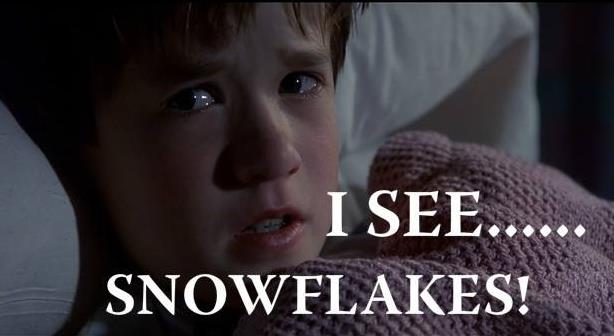
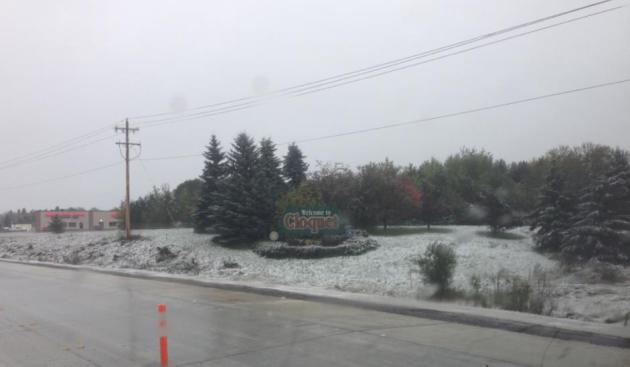

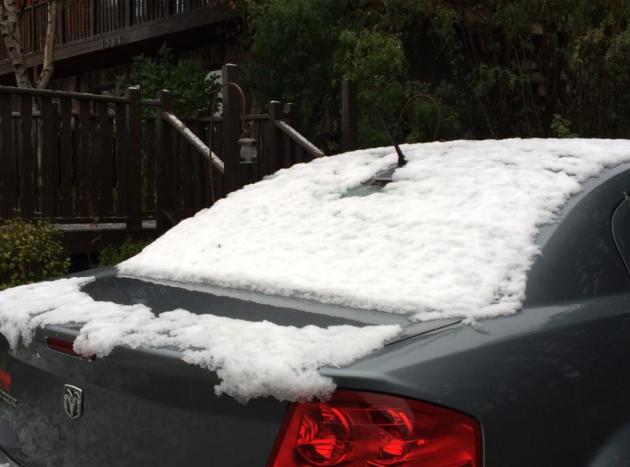


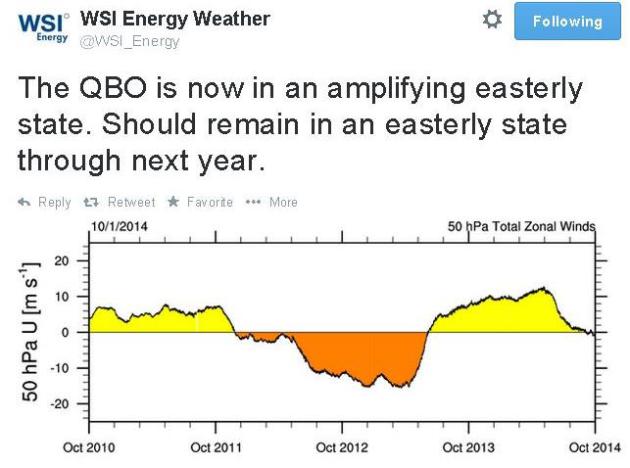

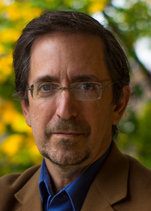

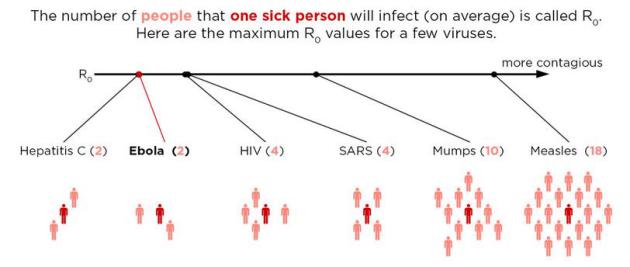



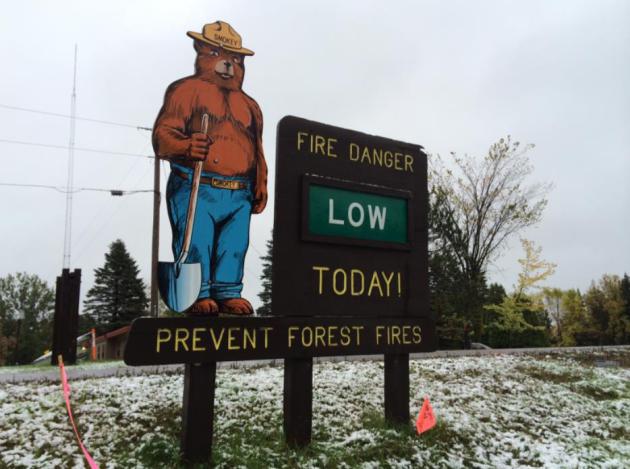
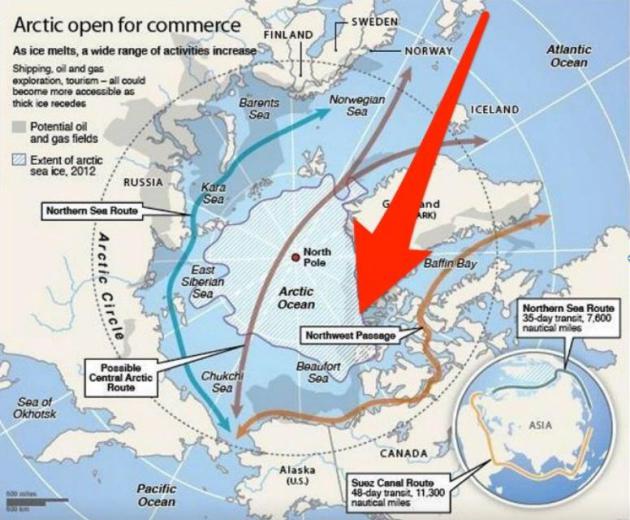
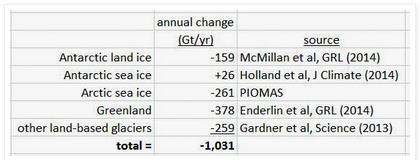
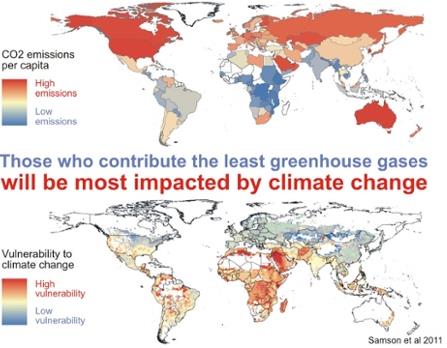
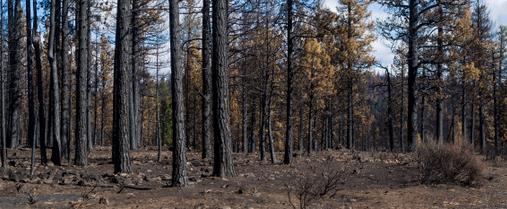
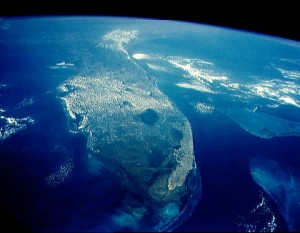

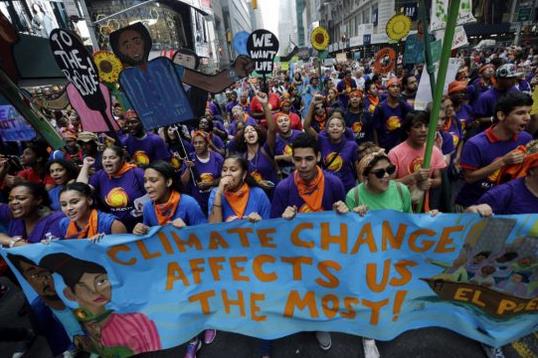
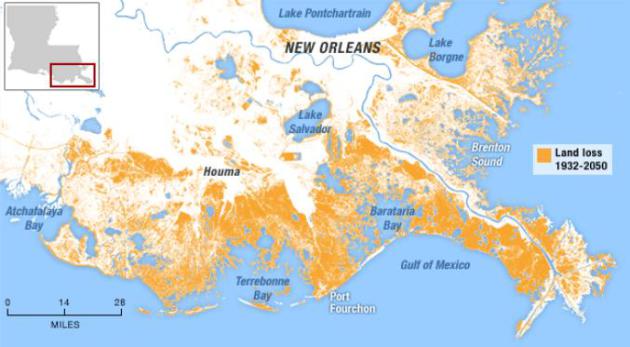
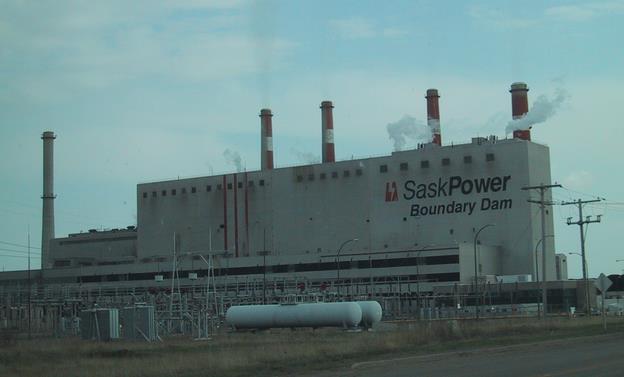
No comments:
Post a Comment